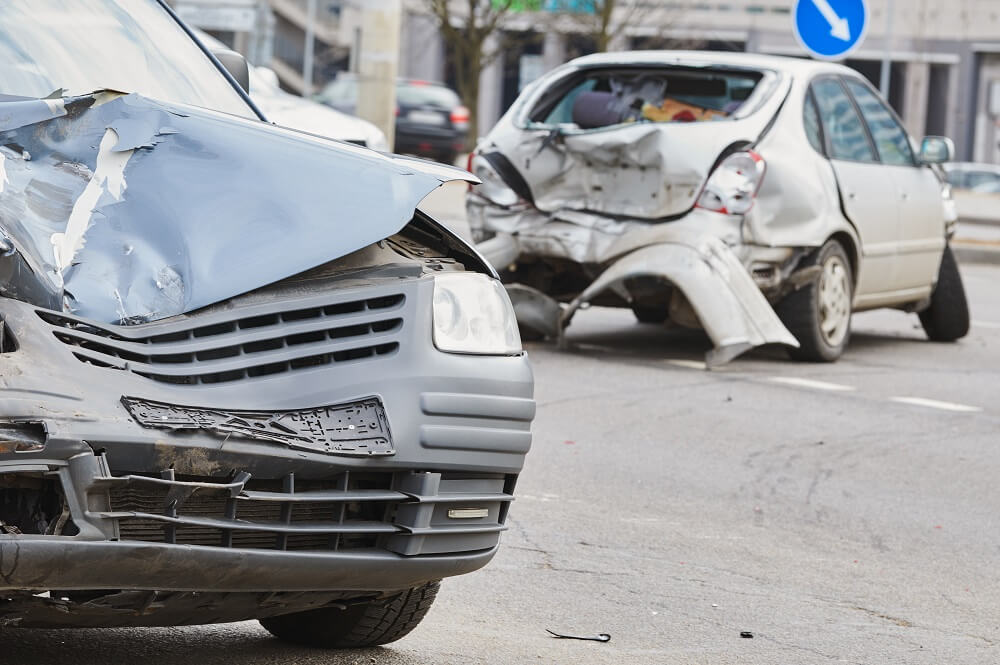Who Is at Fault in a Blind Spot Accident in Virginia?

It’s difficult to avoid hitting something you can’t see. For that reason, blind spots pose a serious traffic safety hazard. Drivers should always turn their heads to check their vehicle’s blind spots before changing lanes. When a driver doesn’t check their vehicle’s blind spots, he or she may end up in an accident when changing lanes or making a turn.
In most blind spot accidents, the fault lies with the driver who was attempting to change lanes or turn. Before making a lane change, a driver has a responsibility to watch out for other vehicles around them and to make sure another motorist isn’t occupying the lane. If you’ve been involved in a blind spot accident, the Roanoke car accident lawyers at the Lichtenstein Law Group PLC can evaluate who is responsible for the work with you to recover fair compensation for your injuries.
Our Roanoke personal injury attorneys have almost 100 years of combined legal experience, and we prepare every case as if it’s headed to trial so we can take a strong position during settlement negotiations. Contact our office to get a free initial consultation.
Contents
Who Is at Fault in a Blind Spot Accident?
All cars and trucks have blind spots in which nearby vehicles may not be visible in the side view or rearview mirrors. Tractor-trailer trucks have especially large blind spots. When it comes to determining who is at fault in a blind spot accident, it’s important to understand the role of negligence in personal injury cases. Drivers have a legal responsibility to obey traffic laws and exercise reasonable caution to prevent others sharing the road from coming to harm. To recover compensation after a blind spot car accident, you will need to show that the other driver was at fault.
In most blind spot accident cases, the negligent driver is the one who moved into the path of another vehicle by attempting to change lanes or make a turn. If the driver did not properly check their blind spots, that means they failed to uphold their duty to drive safely.
However, the particular circumstances of the accident and the available evidence will determine who may be held liable for any injuries resulting from the crash. If you were injured in a crash, the best way to find out who should be held responsible is to have an experienced Virginia car accident attorney at Lichtenstein Law Group review the specifics of the accident and explain your options.
How Do You Minimize Blind Spots Around Your Car When Driving?
Here are some tips to minimize the blind spots around your vehicle while you’re driving:
- Set your rear-view mirror so that the image you see frames your rear windshield, giving you a clear view of what is behind you.
- Set your left-side mirror by sitting in the driver’s seat, pressing your head against the driver’s side window, then adjusting the mirror so that only a portion of your vehicle’s side is visible.
- Set the right-side mirror by sitting in the driver’s seat, leaning to the center of the vehicle, then adjusting the mirror so that only a small part of the vehicle’s right side can be seen. This reduces blind spots and provides the greatest range of vision.
- Before making a turn, changing lanes, or merging into traffic, be sure to turn your head to look for anything in your path that is not visible in your mirrors.
How Do You Compensate for Blind Spots?
Proper defensive driving means being aware of both the blind spots around your vehicle as well as other vehicles’ potential blind spots. Here are a few things to keep in mind when it comes to other drivers’ blind spots while you’re on the road:
- Be aware of a tractor trailer’s no-zones – Because of their length, semi-trucks and other large vehicles have significant blind spots to their left and right sides, as well as directly in front of and behind the vehicle. Be wary when driving close to a truck, and don’t linger in the blind spots. Keep in mind that if you can’t see a truck driver in their side mirror, they most likely can’t see you either.
- Move quickly and safely when passing – If you linger too long in a vehicle’s blind spot when you’re trying to pass, you greatly increase your chances of being involved in a blind spot truck accident. If the driver decides to change lanes while you’re in their blind spot, the trucker may not see you, leading to a crash.
- Stay focused and patient – Situational awareness is critical to avoiding blind spot accidents. You need to anticipate when another vehicle is about to change lanes or merge with traffic. Patience is also crucial. Making a sudden or unexpected move could place you in danger if another driver makes a turn or changes lanes.
- Don’t drive while fatigued, distracted, or intoxicated – Driving while distracted, fatigued, or intoxicated significantly impairs your ability to navigate the roads safely. You may be slower to recognize hazardous situations and react in time to avoid a collision.
How Many Accidents Are Caused by Blind Spots?
While data on local blind spot accidents is limited, a report from the National Highway Traffic Safety Administration (NHTSA) on how new technologies could help prevent blind spot accidents sheds some light on the issue.
The NHTSA report found that, from 2011 to 2015, there were about 500,000 blind spot accidents, accounting for about 8.7 percent of all crashes. The report also states that during the five-year period studied, blind spot accidents resulted in 542 deaths and more than 188,000 injuries.
Contact a Virginia Blind Spot Accident Attorney Today
At Lichtenstein Law Group PLC, our Roanoke car accident lawyers are ready to speak to you about your case and answer any questions you may have about holding another motorist financially responsible for a blind spot accident. We handle cases on a contingency fee basis so you won’t have any upfront costs to seek justice after a collision. Get a free initial consultation today by calling our office or visiting our contact page.

John E. Lichtenstein is a founding member of Lichtenstein Law Group, PLC, with more than three decades of experience as a trial lawyer. A graduate of the University of Virginia School of Law, John has successfully resolved hundreds of cases on behalf of his clients, including some of the largest jury verdicts and settlements in Virginia history. He has also served his profession, including serving as President of the Virginia Trial Lawyers Association in 2015-2016 and as Chair of the Virginia State Bar Criminal Law Section in 2007-2008.


 Tap to Call
Tap to Call